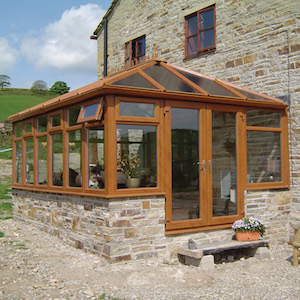
10
junio7 Simple Tricks To Making A Statement With Your Upvc Doors Windows
The Enduring Appeal of uPVC Doors and Windows: A Comprehensive Guide

In the world of home improvement and construction, the option of doors and windows plays a critical function in forming both the visual appeal and practical effectiveness of a structure. Amongst the myriad of products available, Unplasticized Polyvinyl Chloride, more commonly referred to as uPVC, has emerged as a frontrunner for windows and doors in contemporary homes and business spaces alike. This article digs into the world of uPVC doors and windows, exploring their composition, benefits, types, and why they continue to be a favoured choice for property owners seeking resilience, energy efficiency, and design.
Understanding uPVC: The Material Behind the Magic
uPVC stands for Unplasticized Polyvinyl Chloride. To understand what makes uPVC unique, it's handy to very first look at its base product, PVC (Polyvinyl Chloride). PVC is a widely utilized synthetic plastic polymer understood for its adaptability. Nevertheless, uPVC differs from standard PVC due to the 'unplasticized' aspect. This suggests that plasticizers, which are included to make PVC more versatile, are not utilized in uPVC. The absence of plasticizers results in a stiff, strong, and long lasting product that is exceptionally well-suited for building applications, especially for doors and windows.
The core structure of uPVC usually includes:
- Polyvinyl Chloride Resin: The basic structure block, providing the fundamental structure and characteristics of the material.
- Stabilizers: These are contributed to boost the material's resistance to heat, UV radiation, and weathering, making sure durability and colour retention.
- Modifiers: These improve effect resistance and workability, making the uPVC simpler to make and more robust in usage.
- Pigments: These offer colour to the uPVC, allowing for a variety of aesthetic alternatives without the need for painting.
This special formula gives uPVC its fundamental strength and resistance to various environmental aspects, making it a perfect choice for external windows and doors that are continuously exposed to the aspects.
The Plethora of Benefits: Why Choose uPVC?
The appeal of uPVC windows and doors originates from an engaging mix of advantages they provide. These benefits extend beyond mere looks, encompassing useful elements like energy effectiveness, security, and upkeep. Here's a detailed take a look at the essential benefits:
Energy Efficiency: In an age of growing ecological consciousness and intensifying energy costs, energy effectiveness is critical. uPVC masters this domain.
- Thermal Insulation: uPVC is a naturally bad conductor of heat. When crafted into windows and doors, specifically with double or triple glazing, they create an extremely efficient thermal barrier. This insulation reduces heat transfer, keeping homes warmer in winter season and cooler in summer season.
- Lowered Energy Bills: By maintaining a consistent indoor temperature, uPVC windows and doors substantially minimize the reliance on heating and cooling systems, leading to lower energy consumption and as a result, decreased energy bills.
- Air Tightness: Properly installed uPVC frames produce an airtight seal, avoiding drafts and unchecked air leak. This additional contributes to energy efficiency and a more comfy indoor environment.
Resilience and Longevity: uPVC is renowned for its robust nature and ability to endure the test of time.
- Weather condition Resistance: Unlike wood, uPVC doesn't rot, warp, or wear away. It is extremely resistant to rain, wind, sun, and severe temperature level changes, making it perfect for all climates.
- Resistance to Pests and Fungi: uPVC is resistant to insect invasions and fungal growth, eliminating common issues associated with wood frames and guaranteeing long-term structural integrity.
- Low Maintenance: uPVC doors and windows are incredibly low-maintenance. They do not need painting, staining, or sealing. Regular cleaning with soap and water is typically sufficient to keep them looking beautiful for several years to come.
Enhanced Security: Security is a main concern for house owners. uPVC windows and doors are developed with security in mind.
- Robust Construction: The intrinsic strength of uPVC product offers a strong barrier against forced entry.
- Multi-Point Locking Systems: uPVC frames readily accommodate sophisticated multi-point locking mechanisms, significantly improving security compared to traditional locking systems.
- Reinforced Frames: Many uPVC windows and doors integrate steel or aluminium supports within the frame, more boosting their strength and resistance to forced entry.
Visual Versatility: While performance is important, aesthetic appeals can not be overlooked. uPVC uses a wide variety of designs and finishes to match diverse architectural styles.
- Variety of Styles: uPVC windows and doors are offered in many styles, from classic casement windows to modern sliding doors, allowing homeowners to discover alternatives that suit their architectural choices.
- Colour and Finish Options: uPVC is not restricted to fundamental white. Modern manufacturing methods permit a spectrum of colours and surfaces, consisting of woodgrain impacts, providing the appearance of natural materials with the advantages of uPVC.
- Personalized Designs: uPVC can be easily fabricated into bespoke sizes and shapes, accommodating distinct design requirements and architectural designs.
Cost-Effectiveness: While the initial financial investment in uPVC doors and windows might be equivalent to or a little higher than some other materials, their long-lasting cost-effectiveness is undeniable.
- Reduced Maintenance Costs: The very little upkeep requirements translate to substantial savings over the life-span of uPVC doors and windows, getting rid of the costs associated with painting, repairs, and replacements common with other materials.
- Energy Savings: Lower energy bills due to superior insulation supply ongoing monetary advantages, recovering the initial investment in time.
- Long Lifespan: The exceptional sturdiness of uPVC guarantees a long life span, preventing frequent replacements and using excellent value for cash in the long run.
Sound Insulation: Noise pollution is a growing concern, particularly in city environments. uPVC windows and doors offer exceptional sound insulation homes.
- Sound Reduction: The thick nature of uPVC, combined with double or triple glazing, efficiently moistens external noise, creating a quieter and more tranquil indoor environment.
- Boosted Comfort: Reduced noise levels add to a more comfortable and peaceful living area, enhancing total wellness.
Ecological Friendliness: In a progressively eco-conscious world, the ecological effect of structure products is a vital factor to consider. uPVC presents several ecologically friendly qualities.
- Recyclability: uPVC is recyclable, and numerous manufacturers are actively associated with recycling programs, reducing landfill waste and promoting circular economy concepts.
- Lead-Free Options: Modern uPVC formulations are usually lead-free, mitigating health and environmental concerns associated with lead-based items.
- Energy-Efficient Production: The production procedure of uPVC is relatively energy-efficient compared to some other products, further boosting its environmental profile.
Types of uPVC Doors and Windows: Catering to Diverse Needs
uPVC is a versatile material, providing itself to a range of door and window designs, each serving specific practical and aesthetic purposes.
uPVC Door Types:
- uPVC Front Doors: These are the primary entry indicate a home, designed to be both inviting and protect. They typically include decorative panels, glass inserts, and robust locking systems.
- uPVC Back Doors: Typically leading to gardens or yards, these doors focus on security and usefulness, frequently with simpler styles than front doors but preserving the same durability and energy performance.
- uPVC Patio Doors: Designed to supply smooth access to outdoor spaces, patio doors been available in different configurations:
- uPVC Sliding Patio Doors: These doors slide horizontally, saving space and offering large openings. They are perfect for taking full advantage of light and views.
- uPVC French Doors: These doors consist of two nearby doors that open outwards (or inwards), developing a grand, standard appearance and a large, unblocked opening.
- uPVC Bi-fold Doors: These doors fold back in areas like concertina doors, producing a very wide opening and effortlessly connecting indoor and outside areas.
uPVC Window Types:
- uPVC Casement Windows: These windows are depended upon the side and open outwards, offering exceptional ventilation and a clear, unobstructed view. They are understood for their airtight seals and energy performance.
- uPVC Tilt and Turn Windows: These flexible windows can both tilt inwards for ventilation and totally open inwards for simple cleansing and optimum air flow. They are popular for their usefulness and safety functions.
- uPVC Sliding Windows: Similar to moving doors, these windows feature sashes that slide horizontally within the frame. They are space-saving and simple to run, ideal for locations where outwards opening windows are not feasible.
- uPVC Awning Windows: Hinged at the top and opening outwards, these windows offer ventilation even throughout light rain, as they create a protective awning.
- uPVC Fixed Windows: These windows do closed and are designed solely to let in light. They are frequently utilized in combination with other window types to create big glazed locations.
Setup and Maintenance: Ensuring Longevity and Performance
While uPVC is naturally long lasting, appropriate setup is important to optimizing its benefits and guaranteeing long-lasting performance. Professional setup by knowledgeable fitters is highly recommended to make sure right fitting, airtight seals, and correct operation of locking mechanisms.
Maintenance of uPVC windows and doors is remarkably easy. Routine cleaning with a moderate cleaning agent and water is usually adequate to keep them tidy and looking their finest. Oiling hinges and locking mechanisms periodically can make sure smooth operation. Prevent using abrasive cleaners or severe chemicals, as these can harm the uPVC surface area.
Choosing the Right uPVC Doors and Windows: Key Considerations
Picking the right uPVC doors and windows includes several factors to consider to guarantee they satisfy your particular requirements and preferences:
- Style of Your Home: Choose designs and finishes that complement the architectural design of your home, whether conventional or contemporary.
- Energy Efficiency Ratings: Look for energy effectiveness rankings and accreditations to ensure you are selecting items that satisfy your preferred insulation levels.
- Security Requirements: Evaluate your security needs and choose doors and windows with suitable locking systems and support choices.
- Budget plan: Determine your spending plan and check out the series of uPVC options readily available within your price variety. Keep in mind to consider long-term expense savings from energy performance and low maintenance.
- Trusted Suppliers and Installers: Choose trustworthy producers and installers with a tested performance history to ensure quality products and expert installation.
Conclusion: A Smart Investment for Modern Living
uPVC windows and doors have rightfully made their place as a leading choice for homeowners and home builders alike. Their exceptional blend of durability, energy effectiveness, security, visual flexibility, and low maintenance makes them a wise and sustainable investment. By improving the comfort, security, and energy performance of a home, uPVC doors and windows use long-term value and add to a more enjoyable and efficient living environment. As technology and manufacturing procedures continue to advance, uPVC is poised to stay a foundation of modern construction, offering dependable and stylish options for several years to come.
Often Asked Questions (FAQs) about uPVC Doors and Windows
Q1: What precisely is uPVC and how is it various from PVC?
A: uPVC stands for Unplasticized Polyvinyl Chloride. It varies from basic PVC due to the fact that it does not consist of plasticizers. This omission makes uPVC more rigid, resilient, and suitable for building applications like windows and doors, whereas PVC may be more flexible and utilized for various functions like pipes or clothes.
Q2: How long do uPVC doors and windows normally last?
A: uPVC windows and doors are understood for their longevity. With very little maintenance, they can easily last for 20-30 years, and often even longer, depending upon the quality of the product and installation.
Q3: Are uPVC windows and doors energy efficient?
A: Yes, fitter they are extremely energy efficient. uPVC is a natural insulator, and when combined with double or triple glazing, it significantly minimizes heat transfer, keeping homes warmer in winter season and cooler in summer season, consequently reducing energy bills.
Q4: Are uPVC windows and doors protect?
A: Yes, uPVC doors and windows are very protected. They are naturally strong and can accommodate multi-point locking systems. Numerous also consist of strengthened frames for added security against required entry.
Q5: Are uPVC windows and doors costly?
A: While the initial expense may be comparable to mid-range alternatives, uPVC offers exceptional worth for cash in the long run. Their toughness, low upkeep, and energy performance lead to substantial expense savings over their life-span, making them an affordable choice.
Q6: Can uPVC doors and windows be painted?
A: While technically possible, painting uPVC doors and windows is normally not suggested. uPVC is designed to be low maintenance and can be found in a variety of colours. Painting can be complicated and may not adhere well in the long term. It is better to choose the desired colour at the time of purchase.
Q7: How do you tidy uPVC windows and doors?
A: Cleaning uPVC is easy. Utilize a soft cloth or sponge and warm, soapy water. Avoid abrasive cleaners or harsh chemicals. Regular cleansing is typically all that is required to keep them looking their finest.
Q8: What styles and colours are offered for uPVC doors and windows?
A: uPVC windows and doors are available in a broad variety of designs, consisting of sash, tilt and turn, sliding, awning, and repaired windows, and numerous door types like front, back, patio area, French, and bi-fold doors. Colour choices are also substantial, ranging from classic white to coloured foils and woodgrain surfaces.


Reseñas